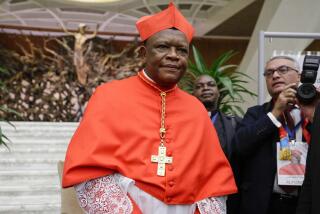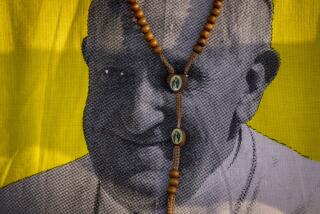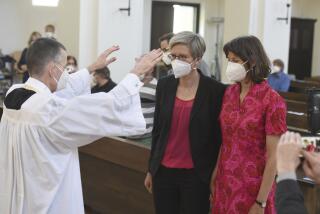Celibacy and the Catholic Church
- Share via
Here is some background on celibacy in the Roman Catholic Church:
The requirement that priests remain celibate is church discipline, not dogma, and therefore can be changed. It was not always observed in the early history of organized Catholicism and has always been a contentious issue.
Priestly celibacy became commonplace by about 300 A.D., when the Spanish Council of Elvira mandated that bishops, priests and deacons who were married refrain from sex with their wives.
Stricter church laws were enacted by the First Lateran Council of 1123 and confirmed by subsequent councils. The crackdown was a response to widespread corruption, as priests and bishops openly took wives and had children who then inherited their property -- thus taking land away from the church.
Supporters of mandatory celibacy point to biblical references on the topic.
Jesus, in the Gospel of Matthew, commends men who “made themselves eunuchs for the sake of the kingdom of heaven.” But the most explicit support for celibacy comes from St. Paul in his First Letter to the Corinthians.
“The unmarried man is anxious about the affairs of the Lord, how to please the Lord,” he wrote. “But the married man is anxious about worldly affairs, how to please his wife, and his interests are divided.”
Still, some married priests do serve the church. In 1980, Pope John Paul II allowed some married Episcopal clergymen to become Roman Catholic priests.
And married priests are the norm among Eastern Rite Catholics in their homelands in Eastern Europe and the Mideast.
More to Read
Sign up for Essential California
The most important California stories and recommendations in your inbox every morning.
You may occasionally receive promotional content from the Los Angeles Times.










